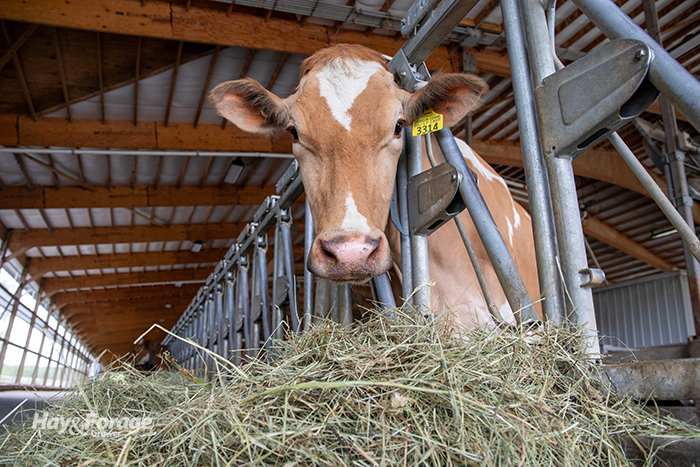
Perennial forages are often praised for their ability to capture atmospheric carbon and sequester it in the soil. But what if forage’s positive impacts on greenhouse gas emissions extended beyond the field and into the feedbunk? According to a Minnesota study, they just might.
In a recent issue of the Midwest Forage Association’s Forage Focus newsletter, Jo Heuschele with the USDA Agriculture Research Service in St. Paul, Minn., highlights the unique ability of ruminants to turn indigestible fiber into high-quality milk and meat. However, the microbes responsible for this fermentation process also contribute to enteric methane emissions from livestock.
“Enteric methane is produced in the rumen when methanogenic bacteria convert carbon dioxide and hydrogen gas from the breakdown of feed into methane and water vapor,” the research agronomist explains.
She adds that enteric methane production from ruminants accounts for nearly 30% of the total methane emissions from the agricultural sector. This statistic should not be used to discourage the indisputable role of beef and dairy cattle in our nation’s food supply, but rather to inspire solutions that mitigate methane emissions across all aspects of an operation, including forage selection.
Like quality and yield potential vary among plant species, so does the enteric methane production of different forages. Heuschele explains feeding one type of forage over another could modify microbial fermentation, thus reducing enteric methane production from cattle.
“Plants have co-evolved with microorganisms and developed secondary metabolites to defend against microbial attacks and other environmental stresses. Therefore, forages and various cover crops could have different enteric methane profiles,” she says.
Greater emissions from grains
In 2022, researchers in Minnesota measured forage quality and enteric methane production of 28 species growing in demonstration plots. They assessed neutral detergent fiber (NDF), neutral detergent fiber digestibility (NDFD48), acid detergent fiber (ADF), and the enteric methane production over 48 hours of oven-dried plant material that was harvested at bud or boot stage.
The biggest distinction among the observed species was the enteric methane production of grain forages like corn, wheat, and oats continued to rise over time, whereas that of crops like alfalfa, teffgrass, and German foxtail millet dropped off after 24 hours. Forage pea, crimson clover, turnips, and brown midrib (BMR) corn caused the lowest rates of enteric methane production.
There is little research on which secondary metabolites — such as tannins, phenols, and lignin — impact microbial fermentation, but Heuschele notes that her lab is investigating the compounds found in these forages to determine how they limit enteric methane production. With that said, she recognizes that incorporating forages with the lowest enteric methane potential may not be practical or feasible on every farm.
Overall, there was no correlation between forage quality and enteric methane production in the study. Heuschele says the former metrics cannot be used to estimate the latter, and the only ways to quantify enteric methane production is with in vitro digestion assays or direct measurements from feed emission systems like Green Feed.

